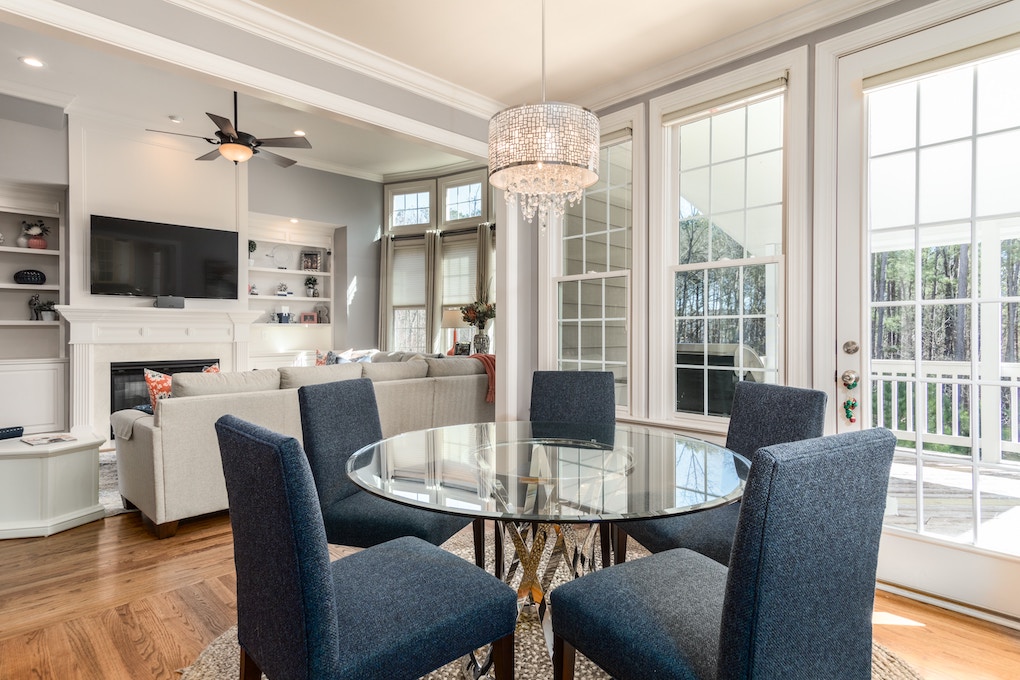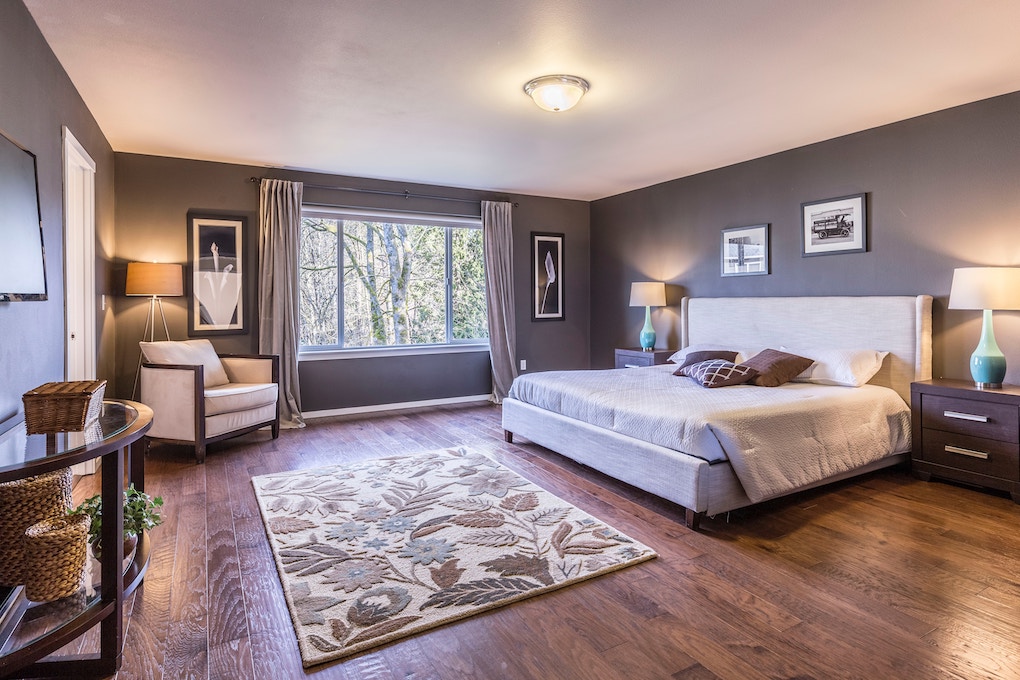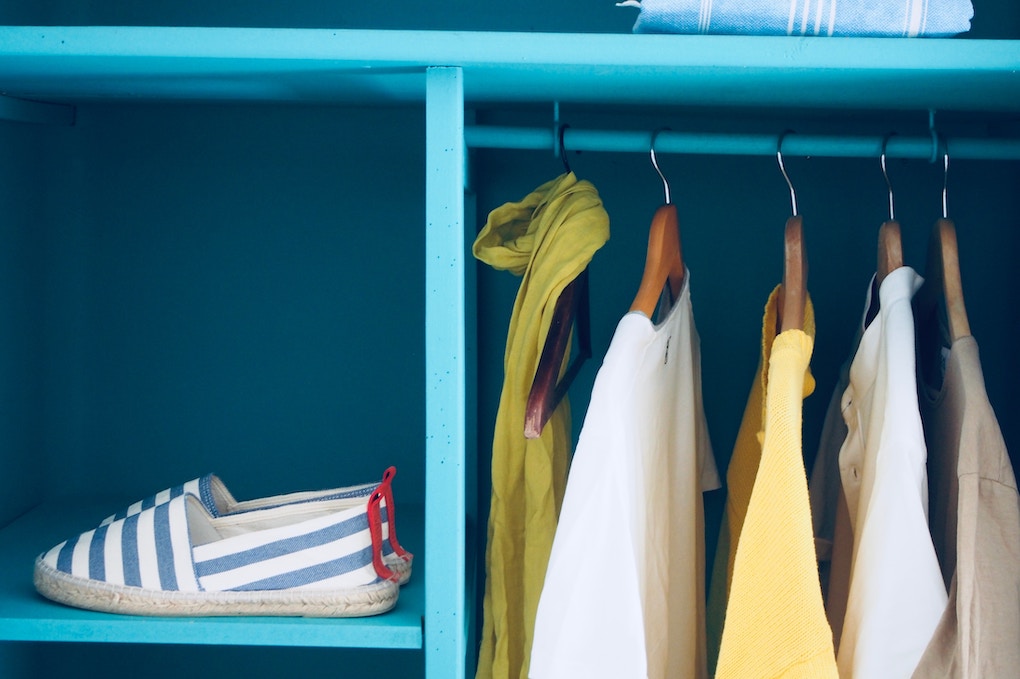DeCluttering to Sell Your Home Fast, Part II
A Room-by-Room Guide
Are you selling your home in the upcoming spring market, or even next year? Organizing your living space is the perfect place to start. If you haven’t already, please read Part I of this post before continuing with Part II. That’s the best place to start your sale prep process. If you have already read Part I, you’re ready to move on to decluttering more of your interior space.
Master Bedroom
Bedroom closets are havens for items you are really done with, but fear that you may want to use one day. The fact that these treasures have been forgotten at the backs of shelves or wedged between other clothing on hanging racks is a good indicator that “some day” is not going to come. Most people add to their wardrobes without first clearing them of rarely used or dated items. These areas are usually filled with loads of decisions you’ve put off making. Embrace your decision-making power and forge ahead to create spacious and functional wardrobe storage.
Closet storage systems of all price points can make a closet look spacious and be more functional. If you have one, that’s a plus. But you can make your closet just as spacious and functional without one by doing a good job of decluttering and organizing. So don’t go out and buy a storage system for a closet you plan to sell. Save that money for the closet in your next home.
The best guiding principle for decluttering the master closet is to remember that closets are for wardrobe items that are regularly used. They are not museums, home decor stores, or staging sites for eBay.
Clear
Start with closet shelves and (if applicable) drawers.
- Remove all items from shelves and drawers.
- As you have done in the kitchen and master bathroom, consider each item carefully. Have you used it in the last 2 years? If the answer is no sort it into the donation pile.
- Throw away worn out or broken items.
- Sort remaining pieces into groups of like items, for example put all hats in one group, scarves into another, home decor items into another, etc.
- Do you own holiday clothing? Consider how practical it is to keep it. Unless these items are for religious purposes, simply wearing nice looking clothing to holiday celebrations is usually sufficient. Freeing yourself of such garments can create more space in this closet and the one you will use in your new home.
- Have you stored wall and home decor items on your shelves? If so it’s because you were done with them and replaced them with more current or appropriate items. Move them along to someone who has the right spot for them or donate them.
- Are holiday decorations taking up master closet space? Review them to be sure you still use them, or that they will fit into your new living space. Donate or sell those that you are done with and move those that you want to keep to garage or basement storage.
Now clear your hanging racks. We love our clothing so be prepared to face some tough decisions.
- Remove all items.
- Review each article of clothing. If it is torn, stained, or worn discard it. No matter how amazing it once was it isn’t doing you any good in that condition and no one else will want it. If it is the wrong size, or you haven’t used it in the last 2 years put it in either the donation or sale piles.
- People have a tendency to hang on to clothes they plan to “diet back into.” Unless you’re actively losing that weight right now the reality is that by the time that weight is lost the clothing will be dated and unflattering. Donate it.
- Unless you’ve already simplified your life, your stacks will probably be equal in size, and your trash, donation, and sale piles may even be larger than the pile of items you plan to keep.
Clear your shoe racks, cubbies, or shelves next. This is another area where people hang on to items that are worn, dated, and simply collecting dust.
- Examine each pair of shoes with a critical eye. Discard worn pairs.
- Be honest with yourself about the last time you wore each pair of shoes. If it’s been 2 years or more you are probably done with them.
- Consider multiples of the same shoe. Many types of athletic shoes are specialty items for a particular sport or exercise. More often than not, though, people add new shoes and fail to remove the ones they are replacing. Don’t hang on to them “just in case.” If you haven’t worn the shoes in 2 years or if you’ve moved on to other activities, put them into the donation pile.
Organize
Now that you’ve done a thorough clearing return the items that belong in your closet to shelves, drawers, and racks.
- A good rule of thumb for a spacious closet is to hang clothes with 1” in between hangers. If you have a smaller sized closet, even a ½” space between hangers makes a pleasing sight.
- Sort your hanging clothes by type (pants, tops, dresses, skirts, jackets, etc.) and then by color and season within each type.
- Keep your hangers uniform so the closet looks clean and spacious.
- Sort your shoes by type, and then by color within type, and return those that you are keeping to their rack, cubbies, or shelves.
- Return hats, folded clothing, and other clothing items to shelves or drawers.
- Belts should be hung from a belt rack or rolled into coils and placed in a drawer or shelf bin.
- Hang scarves or fold them neatly and place them in a drawer or shelf bin.
- Hang ties from a rack or fold them neatly and place them in a drawer or shelf bin.
- Hang purses and bags from hooks or organize them neatly on a shelf.
- If your closet space is really tight, place out-of-season clothing into vacuum storage bags and place them on your highest shelf.
Do you keep a clothes hamper in your closet? Consider using a slim-line type to maximize your space.
Listing photographers and buyers will not open your dressers or drawers, but clearing these spaces while you’re in the mode can free up space for other items, and make your packing job easier.
The guiding principal for decluttering these furniture storage pieces is that they should be used for items needed in the bedroom.
Remove all of the items from your dressers, armoires, storage ottomans, and night stand drawers, and use the culling and sorting process described in Part I of this post, and above.
Clear utilitarian items from the tops of your bedroom furniture pieces and store them in your drawers or in freed up closet space.
When returning your clothing and belongings to your furniture pieces consider using storage aides, such as sock, underwear, and jewelry organizers as well as small storage bins. These items help to maximize your storage space and contain chaos. Best of all, they can make your move with you—as can any storage products that are not attached to walls or cabinets.
Linen Closets
These spaces are havens for the “just in case” items of the bedding and towel departments. If you have lived in your current home for many years, you’ve probably changed out mattresses and even beds over the years. But you may have held onto sheets that don’t even fit your current bedding. When adding new, fresh sheets and towels to your collections you may not have removed the old ones that may be worn, torn, or in colors that no longer gladden your heart.
Since this is a closet, buyers are likely to open it to see how spacious it is.
- Use the sorting and culling processes you’ve used in your other spaces to make your linen closets neat and well organized.
- Be sure to fold all items and place them with items of like type and size.
- Use shelf risers and bins to maximize your storage space.
Remaining Bedrooms and Bathrooms
Use the same processes for sorting and culling that you used in Part I of this post and in the master.
Office
If you have a home office, or an office niche, you have a space that can easily be overloaded with lots of unnecessary paper, outdated office equipment, and old documents that are no longer needed.
The guiding principal for decluttering your office space is to view documents and out-dated equipment as deferred decisions that you are now ready to make. Remember that your office is for things that help you to do your work and only those items.
Picture the office space available in your new residence when paring down the contents of your current space, including furnishings. You may have to part with some old companion pieces when moving day arrives, especially if you are downsizing.
Use the clearing and culling processes that you’ve used in other rooms to go through the contents of your desk drawers, credenza, shelves and file cabinets.
Clear
- Shred old financial, medical, or other sensitive documents that you no longer need.
- Consider digitizing paper documents that you need to keep. Many scanning apps that turn documents into pdfs are available for download to smartphones and tablets.
- Dispose of old electronics safely. For items that you can’t donate or trade in, follow EPA guidelines.
Organize
- Use storage bins, shelf risers, and portable in-cabinet drawers where necessary to maximize your storage space.
- Make sure that books on open shelves are neatly ordered and that files are contained in hanging folders within organizers or in accordion style folders.
Keep your desk, work table, and credenza tops clear.
- Follow the “do it now rule” and deal with your documents and snail mail before you end each work day or session.
- Store your working files and papers in your newly cleared drawers when the work day is done.
Living Rooms and Dens

People do much of their living in these rooms so shelves, table tops, cabinets, and drawers are likely to be full of all kinds of recreational items, and many things that carry sentimental attachment as well.
Home buyers want to see clean, roomy spaces that have more than ample room for their belongings, though.
The guiding principal for decluttering these rooms is to make sure that the items in these rooms are things that you currently use there.
- Old toys and games that teen or adult children have grown out of are better moved along to new hands and minds.
- Avid readers with large collections of books they’ve already read—that are not real collectibles or leather-bound display pieces—should share the wealth of their literary treasures with others who love to read. Donate them.
- Clear your table tops of everything except lamps and decorative pieces.
- Take a good look at decorative pillows and throws. Are they enhancing your furniture? If they are worn, torn, or stained discard them. If they don’t enhance your decor, donate them.
- Depersonalize your room by storing personal photos, awards, family crests, etc. in cabinets or drawers, or box them up and place them in basement storage for the listing period. Buyers relate to spaces they can imagine being their own.
- Use bins, shelf risers and in-cabinet drawers, if necessary, to maximize your storage space.
Dining Room
The dining room often turns into a family dumping spot for the mail, book bags, and things you want to move out of sight to deal with later. These are all decisions that you have put off making.
The guiding principal for decluttering this room is that the dining room is for dining and should contain only items that are used to dine.
Start with your table.
- If it contains anything other than a decorative centerpiece sort all of those items into keep, discard, and donate/sell groups.
- Open and deal with mail, move book bags to a laundry or mud room, or even a coat closet. It’s fine for kids to do their homework at that table so long as they pack it all up and put it away when they are done.
Once your table is clear remove items from your buffet and server.
- How many sets of china or dishware do you have? If the answer is more than one ask yourself how many you really use; and then how many will you need in your new residence? Pare down to that number. Donate or sell the rest.
- Look at your serving pieces and review them in the same manner.
- Go through the same process with your crystal or glassware, and then, with your silver or flatware.
- Are you storing cloth napkins and linens in your buffet or server? Evaluate them critically. Discard those that are stained or torn. Donate or sell those that you haven’t used in recent years.
- If you’re getting a new table or dining set for your new residence be sure to picture those pieces when you sort and cull. Make sure that the table, glass, and flat wares, and linens will fit in them and on the table.
When you’ve finished decluttering your main rooms, they will look spacious and appealing, and your clutter-free living space will increase your productivity and make cleaning easier.
If you don’t want to declutter yourself, there are many reputable people who can do all, or part, of the process for you. If you live in Peachtree Corners, contact me and I can give you a few names to check out.
To finish the decluttering process watch my blog for “DeCluttering to Sell Your Home Fast, Part III” coming soon.
If you like this, share it



